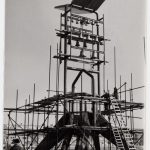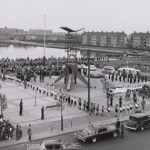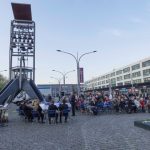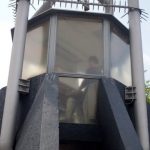Past and present
The idea to create a Freedom Carillon was put forward by the famous Dutch journalist and politician Gerrit Jan van Heuven Goedhart, one of the members of the National Remembrance Committee after World War II. In order to achieve this project a subcommittee ‘vrijheidsklokken’ was created in 1949.
Donations for the carillon came from the whole Dutch population and in 1952 the Van Bergen bell foundry cast a carillon of 23 bells. The bourdon was called after Princess Wilhelmina, the following wo bells after Queen Juliana and Prince Bernhard. The next eleven bells were named after the then 11 Dutch provinces. Inscribed on the nine smallest bells is the national motto of the Netherland Je maintiendrai (‘I will persist’).
As the most severely damaged city during the war, the city of Rotterdam applied to house the instrument. Eventually the capital city of Amsterdam was chosen as the location of the Freedom Carillon. A structure to house the bells was built on Plein 1940-1945 in the borough of Slotermeer. The inauguration took place on 4 May 1961 Queen Juliana activated the automatic playing system and Mr. Romke de Waard gave the inaugural recital, performing national Dutch songs together with the Amsterdam Police Band. In 1995 the carillon was enlarged to 31 bells.
The initial idea was that the carillon would keep alive the memory of the war and the occupation by playing a Duch resistance song on a daily basis. This concept was not carried out.
Facts and figures
| Number of bells | 31 |
| Total weight of the bells | ca. 1685 kg |
| Weight of the bourdon | 257 kg |
| Pitch of bourdon | connected to c in the keyboard |
| Bell-founders | 15 Van Bergen (1952), 16 Petit & Fritsen (1995) |
| Manual playing system | mechanical baton-type keyboard |
| Automatic playing system | half hour chimes (Valerius music) |
| Carillonneur | Klaas de Haan |
| Regular recitals | 24 Saturdays in a year around 11.30 am |
| Summer concerts | 4 May (Memorial Day) |
| Accessibility of the tower | by appointment |
Significant inscription
Aan de gemeente van Amsterdam
aangeboden door de Commissie Nationale Herdenking
Als symbool van de bevrijdingsstrijd
van het Nederlandse volk
(Offered to the City of Amsterdam
by the Commission for National Remembrance
as a symbol of the battle for freedom)
Text on the monument



